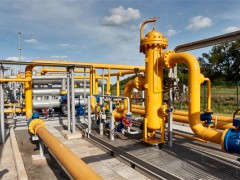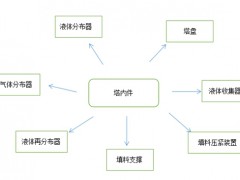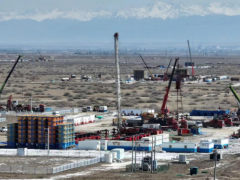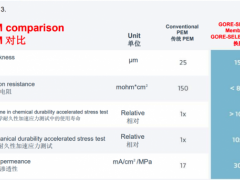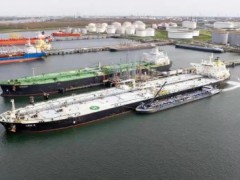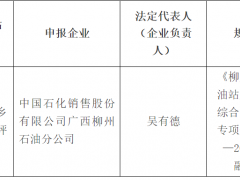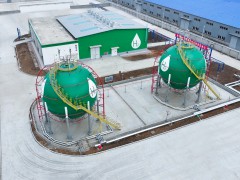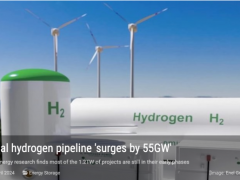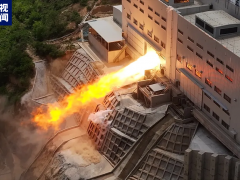摩根士丹利的一项分析显示,由于欧洲的天然气库存充足,因此2023/2024年可能出现的暖冬可能会使欧洲天然气价格大幅下降一半
相反,如果2023/2024年冬季比以往平均气温低,可再生能源发电量低,天然气价格可能会飙升至相当高的水平
尽管预测乐观,但冬季天气和可再生能源有效性的不确定性使未来欧洲的天然气价格难以预测
据油价网2023年7月16日报道,欧洲的天然气库存时下处于较高水平,有望比计划提前满仓。这让政府和行业相信,去年欧洲发生的能源危机,2023/2024年冬季不会重演。
目前欧盟基准天然气价格是去年夏天欧洲管道天然气削减供应时最高价格的十分之一。
然而,在即将到来的冬季之前和期间,天然气价格和需求将取决于欧盟无法控制的两个因素,即天气气温和可再生能源在混合能源占比中的贡献,因此价格波动性将继续存在。
由于冬季天气温和,欧盟消费量减少以及能源成本高导致的工业需求破坏,欧洲顺利度过了2022/2023年冬季,没有出现天然气短缺或天然气配给。
在2023/2024年冬季到来之前,欧洲只能希望出现又一个气温较温和的冬季,而不会出现长时间的冰冻增加对供暖和燃气发电的需求。
摩根士丹利表示,如果又一个暖冬来临(这是可能的,但远非肯定)欧洲的天然气价格可能会从目前的水平暴跌一半,暴跌至每兆瓦时16.85美元(15欧元)。
摩根士丹利分析师日前在一份研究报告中写道,“如果天气持续温暖,可再生能源表现强劲”,基准天然气价格可能会从2020年底跌至这一水平。
欧洲天然气交易基准TTF中心的近月期货在荷兰当地时间7月13日收于每兆瓦时30.60美元(27.24欧元),而12月至明年2月的期货价格约为每兆瓦时56美元(50欧元)。
摩根士丹利的15欧元预测只是该行对预计10月份冬季供暖季节启动后对欧洲天然气价格的预测之一。
在另一种情况下,如果2023/2024年的冬天比平时更冷,而可再生能源不能产生太多的电力,天然气价格可能会飙升至每兆瓦时112美元(100欧元)。
摩根士丹利预计,今年10月之后,使用加权平均值的天然气价格更有可能在每兆瓦时50美元(45欧元)左右交易。
本周,欧洲的天然气价格从6月份的水平下跌,因为在工业放缓的情况下,需求继续普遍疲软,尽管热浪持续了很长时间。
由于挪威几个大型天然气田的维护作业和出口路线减少了通过挪威管道向欧洲供应的天然气,6月份天然气价格飙升。挪威目前是欧洲最大的单一天然气供应国。
随着挪威特罗尔大天然气田从维护作业中恢复,挪威的天然气供应增加了,再加上需求不温不火,欧洲天然气价格跌至一个月来的最低点。
天然气库存也有所增加,让欧盟各国政府在冬季来临之前更有信心。根据欧洲天然气基础设施公司公布的数据,到7月12日,欧盟各地的天然气储存设施已填满80.3%。
欧盟已经设定了一个目标,到今年11月1日天然气库存量将达到90%。据摩根士丹利称,欧盟不仅会提前实现这一目标,而且还可能在9月初将天然气储罐填满100%。
挪威研究机构雷斯塔能源还认为,欧洲将比计划提前达到目标。
雷斯塔能源高级分析师 Lu Ming Pang 本月早些时候表示:“考虑到历史需求,并假设不同的供应情况,2023/2024年冬季前天然气储存设施甚至可能100%填满,导致天然气流量不得不转移到其他地方。”
今年冬天,对欧洲消费者和各国政府来说,天然气储存设施的完全填满将是一个好消息。自去年秋天以来,欧洲已经成功修建完成了新的液化天然气进口终端,为液化天然气货物的稳定流入提供了保障,在2022/2023年冬季之前,情况不会像人们担心的那样糟糕。
但冬季天气和可再生能源提供更多电力的能力存在很大的不确定性。自能源危机爆发以来,欧洲还没有经历过真正寒冷的冬天,这使得价格预测就像7月份预测12月份的气温一样棘手。
李峻 译自 油价网
原文如下:
A Mild Winter Could Cut Europe’s Natural Gas Prices In Half
· Europe's gas stockpiles are plentiful, with a possible mild winter potentially reducing natural gas prices by half, according to a Morgan Stanley analysis.
· In contrast, if the winter is colder than average and renewable energy generation is low, gas prices could spike to significantly high levels.
· Despite the optimistic forecast, uncertainties regarding winter weather and the effectiveness of renewable energy sources leave future gas prices unpredictable
Europe’s natural gas stockpiles are at elevated levels and on track to be full sooner than planned. This gives governments and industries confidence that last year’s energy crisis will not be repeated.
The benchmark natural gas prices are one-tenth of the records seen last summer when the largger producer slashed pipeline supply to Europe.
Volatility, however, will continue as prices and demand ahead of and during the coming winter will depend on two factors that are out of EU control—the weather and the contribution of renewable energy sources to the mix depending on the weather.
Thanks to milder winter weather, reduced EU consumption, and demand destruction in industry due to the high energy costs, Europe made it through the 2022/2023 winter without gas shortages or gas rationing.
Ahead of the 2023/2024 winter, Europe can only hope for another winter of milder temperatures without prolonged periods of freezes that would boost demand for heating and for gas-fired power generation.
In case of another mild winter – which is possible but far from certain – Europe’s gas prices could plunge from current levels and halve to $16.85 (15 euros) per megawatt-hour (MWh), according to Morgan Stanley.
“If weather is persistently warm and renewables perform strongly,” the benchmark gas prices could crumble to the levels from the end of 2020, Morgan Stanley analysts wrote in a research note this week, as carried by Bloomberg.
The front-month futures at the TTF hub, the benchmark for Europe’s gas trading, settled at $30.60 (27.24 euros) per MWh on Thursday, while futures prices for December through February are around $56 (50 euros) per MWh.
Morgan Stanley’s 15-euro call is just one of the bank’s scenarios for Europe’s natural gas prices after October when the winter heating season is expected to begin.
At the other end of the scenarios, prices could spike to $112 (100 euros) per MWh if the 2023/2024 winter is colder than normal and renewables cannot generate too much electricity.
After October, using a weighted average, Morgan Stanley sees prices more likely to trade around $50 (45 euros) per MWh.
This week, Europe’s prices slumped from June levels as demand – despite a major prolonged heatwave – continues to be generally weak amid an industrial slowdown.
Prices had jumped in June as maintenance on several large Norwegian gas fields and export routes reduced supply to Europe via pipelines from Norway, which is now Europe’s single largest gas supplier.
With the giant Troll gas field returning from maintenance, Norwegian supply increased. Combined with tepid demand, this sent European gas prices to the lowest in a month.
Stockpiles are also elevated, giving further confidence to governments ahead of the winter. As of July 12, gas storage sites across the EU were 80.3% full, according to data by Gas Infrastructure Europe.
The EU has set a target to reach 90% full gas storage by November 1, 2023. Not only will it hit that target ahead of schedule, but it could also fill its storage tanks to 100% by early September, according to Morgan Stanley.
Rystad Energy also believes Europe will reach the target earlier than planned.
“Considering historical demand, and assuming different supply scenarios, storage facilities could even be full ahead of winter this year, resulting in gas flows having to be diverted elsewhere,” senior analyst Lu Ming Pang said earlier this month.
Full gas storage sites will be good news for European consumers and governments this winter. Additional LNG import terminals that Europe has managed to install since last autumn and steady inflows of LNG cargoes are also providing some comfort that things can’t be as bad as feared ahead of the 2022/2023 winter.
But uncertainties are high about winter weather and the ability of renewables to provide more electricity. Since the energy crisis began, Europe hasn’t seen a really cold winter yet, which makes price predictions as tricky as predicting in July the temperatures for December.
免责声明:本网转载自其它媒体的文章及图片,目的在于弘扬石化精神,传递更多石化信息,宣传国家石化产业政策,展示国家石化产业形象,参与国际石化产业舆论竞争,提高国际石化产业话语权,并不代表本网赞同其观点和对其真实性负责,在此我们谨向原作者和原媒体致以崇高敬意。如果您认为本站文章及图片侵犯了您的版权,请与我们联系,我们将第一时间删除。


